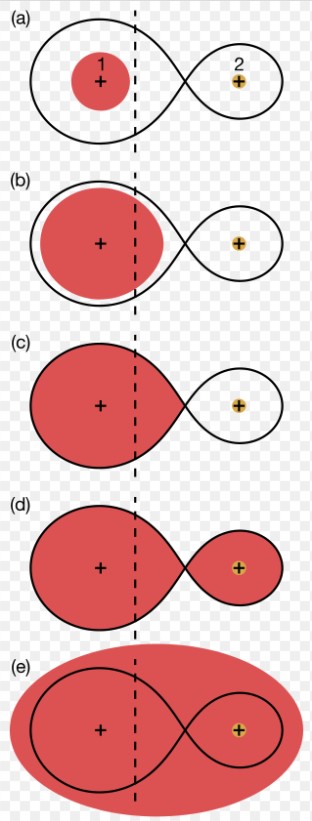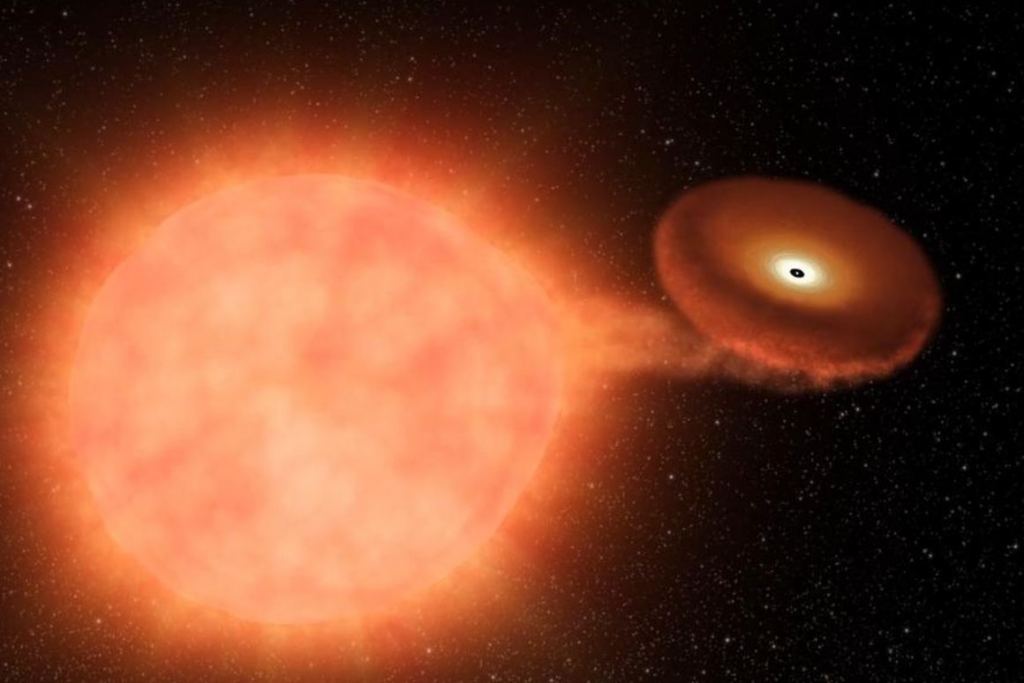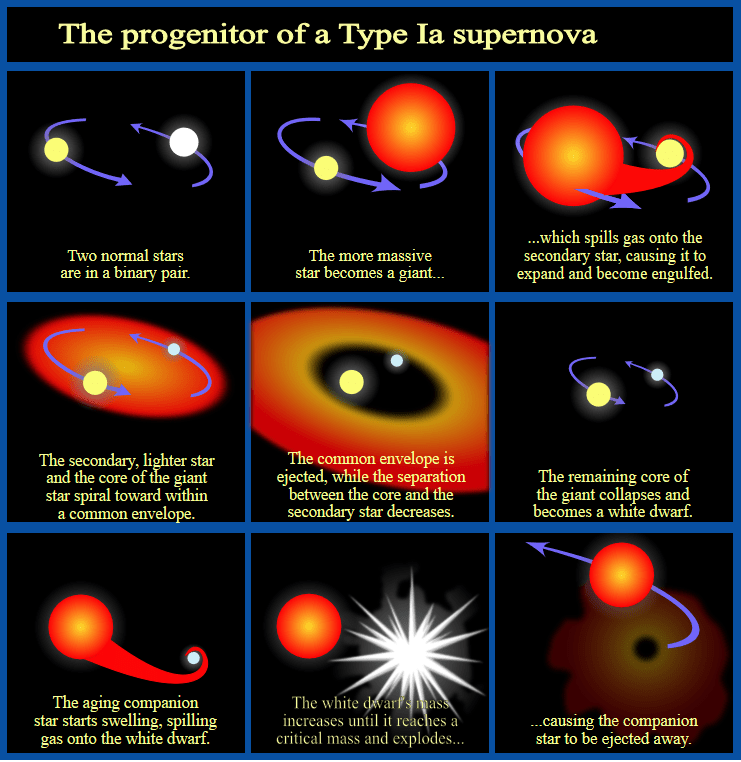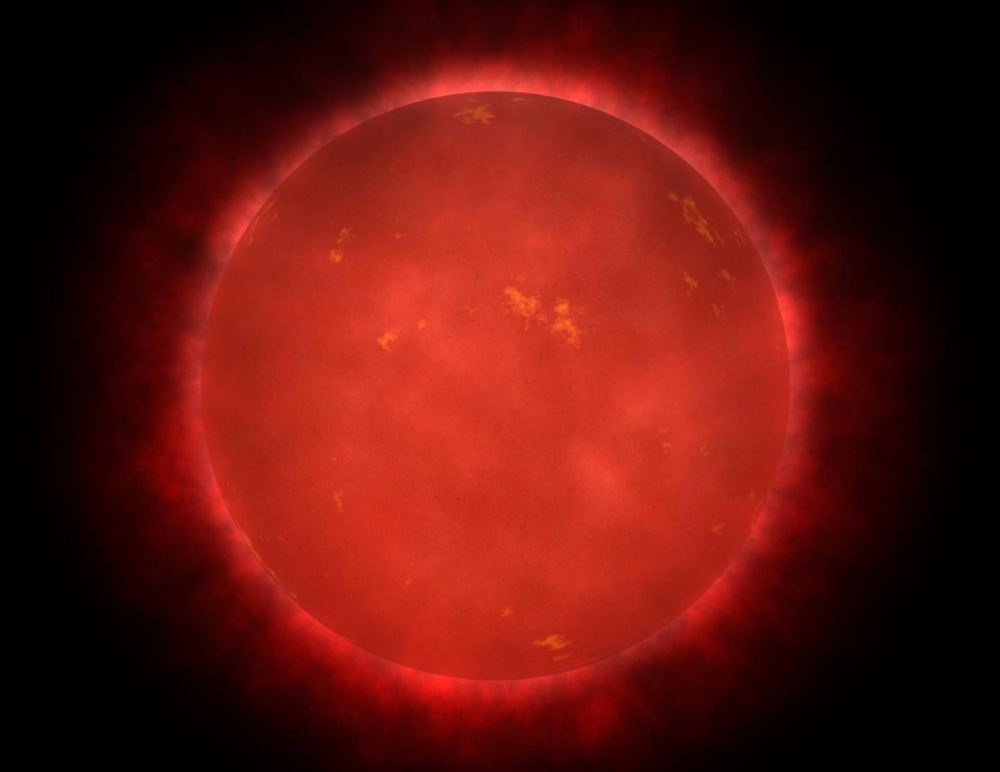We know what will happen to our Sun.
It’ll follow the same path other stars of its ilk follow. It’ll start running out of hydrogen, swell up and cool and turn red. It’ll be a red giant, and eventually, it’ll become so voluminous that it will consume the planets closest to it and render Earth uninhabitable. Then billions of years from now, it’ll create one of those beautiful nebulae we see in Hubble images, and the remnant Sun will be a shrunken white dwarf in the center of the nebula, a much smaller vestige of the luminous body it once was.
This is the predictable life the Sun lives as a solitary star. But what happens to stars that have a solar sibling? How would its binary companion fare?
Our Sun is both unusual and unremarkable at the same time. It’s a common type of star, an unremarkable G-type main sequence star. But it’s a little unusual because it’s alone. About half of the stars in our galaxy exist in binary pairs or in even larger associations.
What happens to a pair of binary stars when they age? That’s the focus of a new study by researchers from the Australian National University (ANU) and the Yunnan Observatory in China.
The study is “A Roche Lobe-filling hot Subdwarf and White Dwarf Binary: Possible detection of an ejected common envelope?” published in the Monthly Notices of the Royal Astronomical Society. The lead author is Jiangdan Li from the Yunnan Observatory.
Stars in a binary relationship follow much more complicated paths than solitary stars. They’re gravitationally bound to one another. That creates a dynamic that leads to unusual phases in their lives. One of those phases is the “common envelope phase” binaries go through as the stars leave the main sequence. It had never been directly observed until recently when astronomers at ANU and Yunnan Observatory spotted a binary pair inside an expanding shell of material. That shell is the remnant of the common envelope phase.
For much of the life of a binary pair, they orbit around each other without event. But as they evolve, the pair experiences a shift. When one of them becomes a red giant, the relationship between the pair changes irrevocably.
Christian Wolf is an associate professor at ANU and one of the paper’s authors. In a press release, Wolf said, “In the early stages, two stars often circle around each other with nothing much happening. But when one of the stars grows into a red giant, it does not just claim more empty space the way a single star will do.”

“Instead, it ’embraces’ or engulfs its companion, and they appear as one star under an opaque envelope,” Wolf said. “That’s when things get really exciting. The friction of their motion inside the envelope profoundly alters what happens next for the stars. It not only causes heat but slows down the stars, so they spiral into an ever-tighter orbit; the envelope finally overheats and gets blown away.” The envelope was blown away about 10,000 years ago for this binary pair.
Identifying and observing the common envelope phase is important because it’s a missing link in astrophysics. In this case, the pair of stars is a hot subdwarf star and an accreting white dwarf. A hot subdwarf is a late-stage evolution star that has lost the hydrogen from its outer layers before the core starts fusing helium. Where have its outer hydrogen layers gone? To the other star.

The other star in this pair is an accreting white dwarf. A white dwarf is the stellar remnant of a star. They’re only about the size of Earth but extremely dense. The white dwarf is drawing material away from the hot subdwarf, stealing the subdwarf’s outer hydrogen layers and accreting the hydrogen onto itself. Over time, the subdwarf will also become a white dwarf, and the two white dwarfs can merge.
But now, the pair have ejected their common envelope. The evidence for that comes from “… an outstanding feature in the spectrum of this object,” the authors write. The feature is Calcium absorption lines used to study stars. In this case, the lines are blue-shifted by about 200 km/second. The authors say this means they likely originate from the ejected envelope.
The paper explains two possible explanations for the formation of the binary and the ejected envelope: ejection when the primary star was in its Red Giant Branch (RGB) phase and ejection when it was in its Asymptotic Giant Branch (AGB) phase. RGBs and AGBs are quite similar, and RGBs can become AGBs. Both types have extended envelopes of H and He that don’t undergo fusion and dense cores of material that don’t undergo fusion.

The first scenario is a common envelope (CE) ejection during the RGB phase. The Red-Giant Branch (RGB) phase is part of the main sequence for low to intermediate-mass stars.
The second scenario is CE ejection during the Asymptomatic Giant-Branch (AGB) phase. In the AGB phase, stars are late in their lives and have evolved into cool, luminous orbs. An AGB star has an inert core of carbon and oxygen and other layers outside that. One shell fuses helium into carbon, one fuses hydrogen into helium, and a large outer envelope sits outside it all, composed of the same material that a main sequence star is composed of.
The authors conclude that CE ejection during the AGB phase is more likely. Assistant Professor Wolf told Universe Today, “In the RGB CE ejection case, a much longer time has passed between ejection and now (~60 million years), while the AGB phase would have been in the much more recent past (~10,000 years). As a result, the expanding shell would still be much more compact at this stage in the AGB case, while in the RGB case, it would be quite diluted by millions of years of expansion since ejection.”
The younger AGB scenario means that line-of-sight observations travel through denser gas because the common envelope was only ejected 10,000 years ago and hasn’t become as diffuse. So astronomers see more blue-shifted material compared to the RGB scenario. For the RGB scenario and its 60 million years of diffusion of the ejected common envelope, seeing this much blue-shifted material means the massive envelope of material would have to contain millions of solar masses, which is impossible. “Extrapolating the density to a very large shell would lead to masses in the millions of solar masses, rather than a couple of solar masses, which is the realistic amount of ejected matter,” Wolf told Universe Today.
There’s another reason the researchers settled on the AGB scenario and its more recent envelope ejection: it provides the friction that explains the orbital shrinkage of the binary pair. According to the paper, the white dwarf has an “… orbital period of 3.495 hours and an orbital shrinkage of 0.1 s in 6 yr.”
Wolf explained the role the ejected envelope plays in orbital shrinkage. “If the ejected material has been expanding for millions of years, and there is very little left behind in the system, we won’t have the friction required to slow down the orbit of the remaining binary. With a young ejected CE, there would be more material remaining locally in the volume of the binary orbit that could make the slow-down of the orbit plausible.”
So the AGB scenario with its 10,000-year-old common envelope ejection not only explains the blue-shifted material they observe but also the measured shrinkage of the pair’s orbital period.
What does it all mean?
“The common envelope phase is a missing link in the very long and complex chain of events making up the life of stars. Now we are starting to fix that link,” Associate Professor Wolf said. “It could even help us better reconstruct gravitational wave events, such as black hole mergers.”
The stars in this binary pair won’t become black holes. But they could both end up as white dwarfs. If they merge as white dwarfs, they’ll create the same gravitational wave that merging black holes do. And gravitational waves and mergers are a hot topic in astrophysics, especially since we observed our first waves only a few years ago.
Binary pairs like this could also teach us more about Type 1A supernovae. Those supernovae occur in a binary pair where one of the stars is a white dwarf. The white dwarf accretes material from its companion until it explodes.

The evolution of common envelopes is a long-standing problem in astrophysics. There’s a lot of uncertainty around them. Even identifying binaries in their common envelope phase has been difficult, but this pair is the third of its type discovered. With each identification, future identifications become easier.
“It may be easier to recognize them now we have a clearer idea of what to look for. There may be others that have been under our noses the whole time,” Associate Professor Wolf said.

